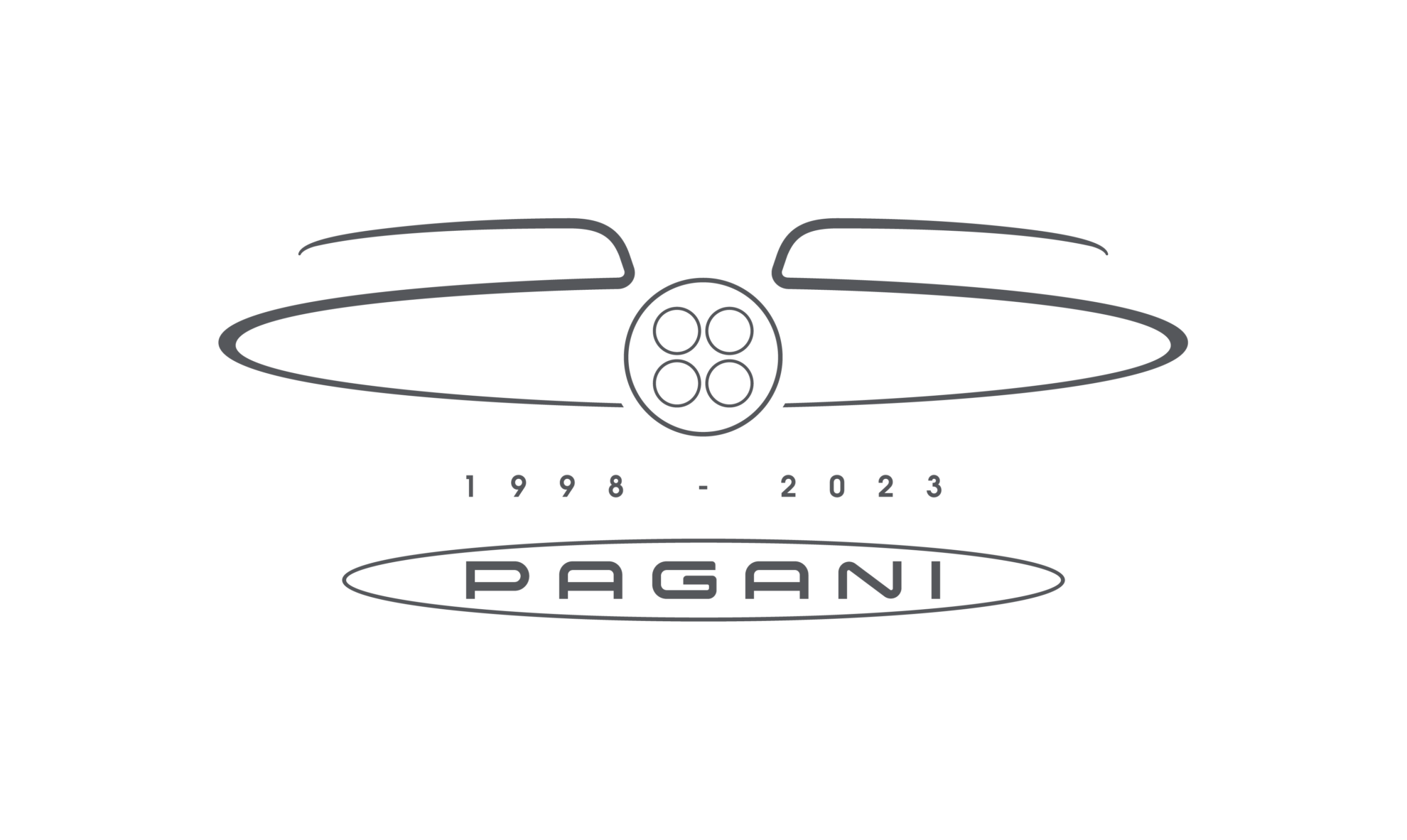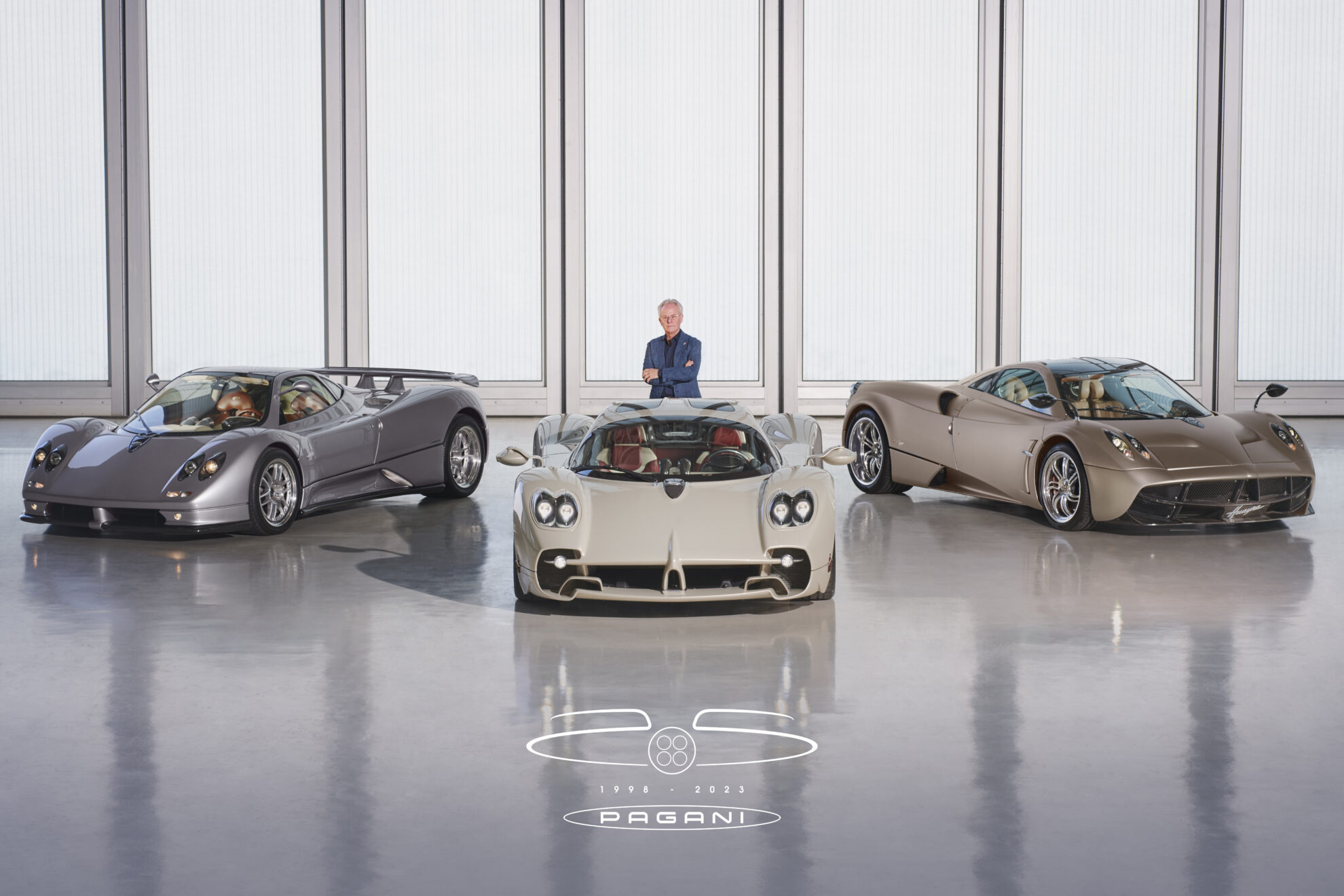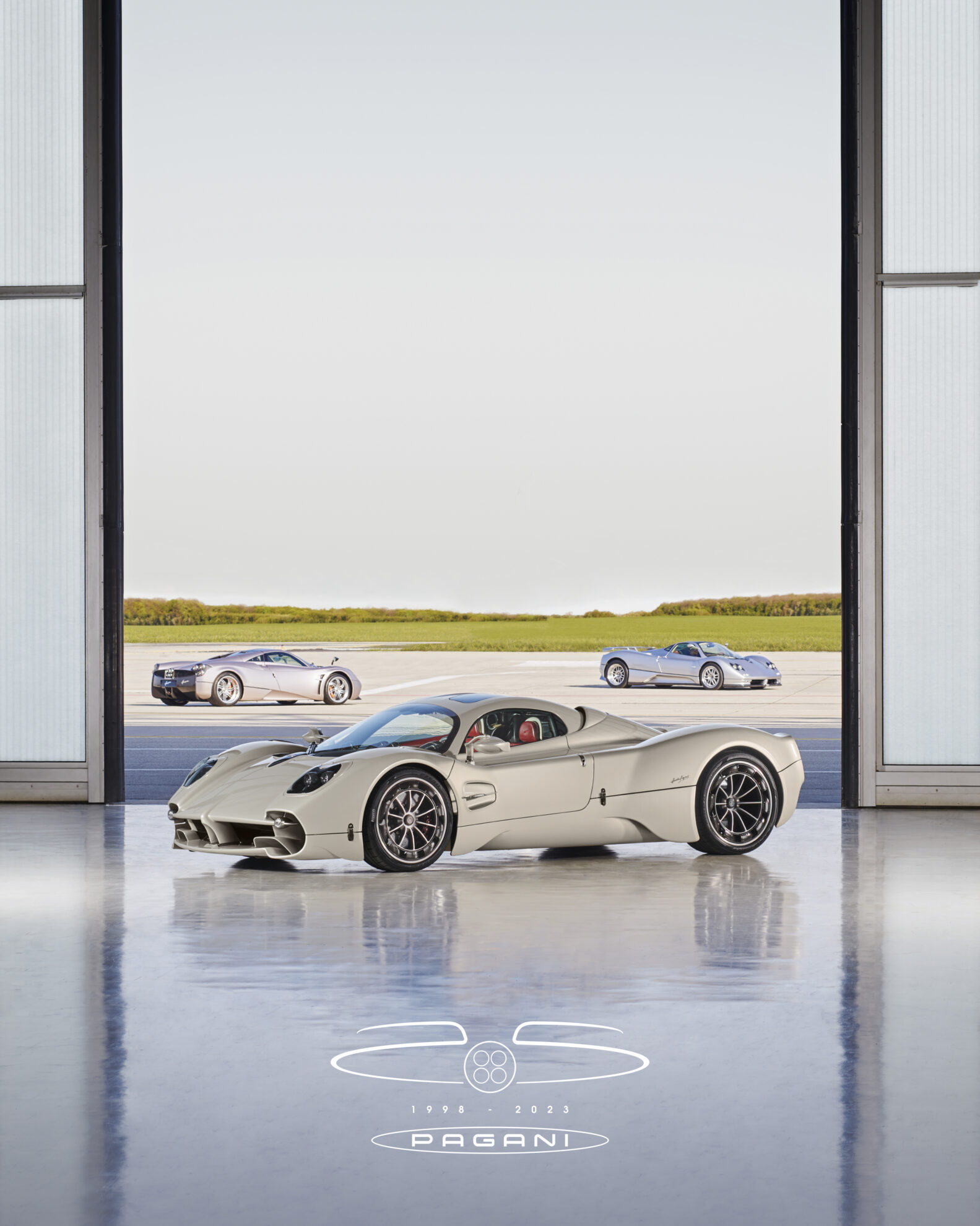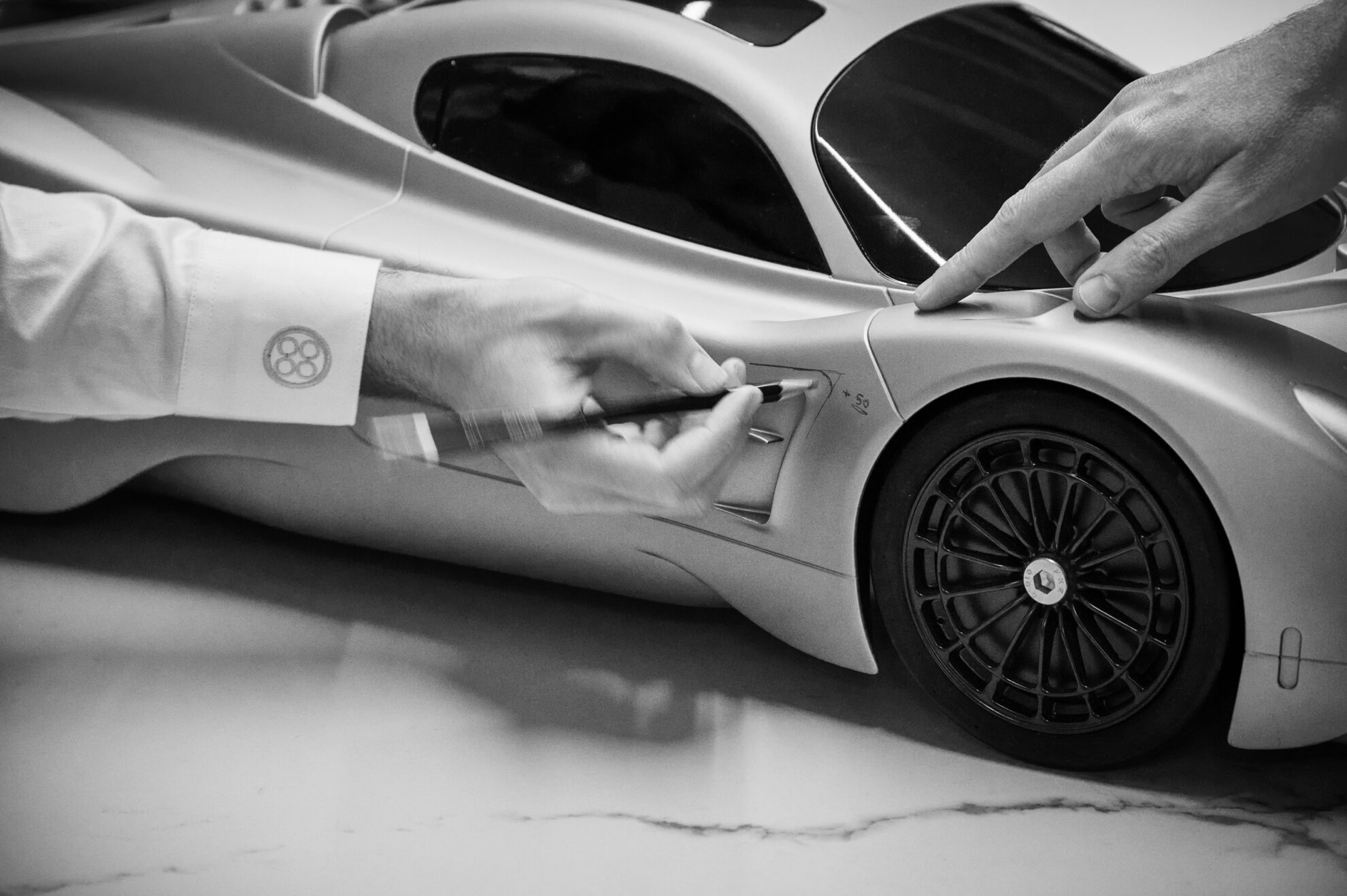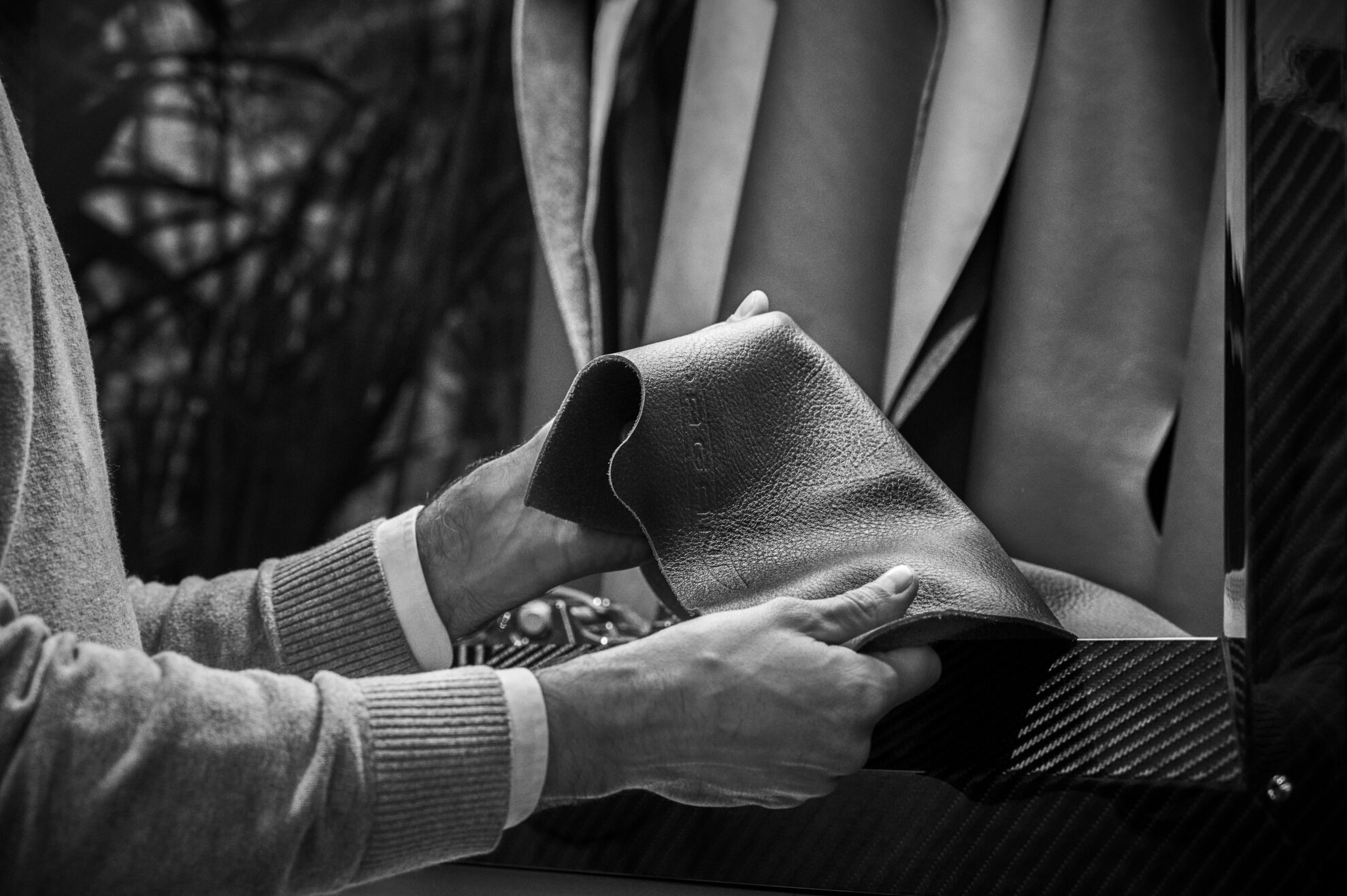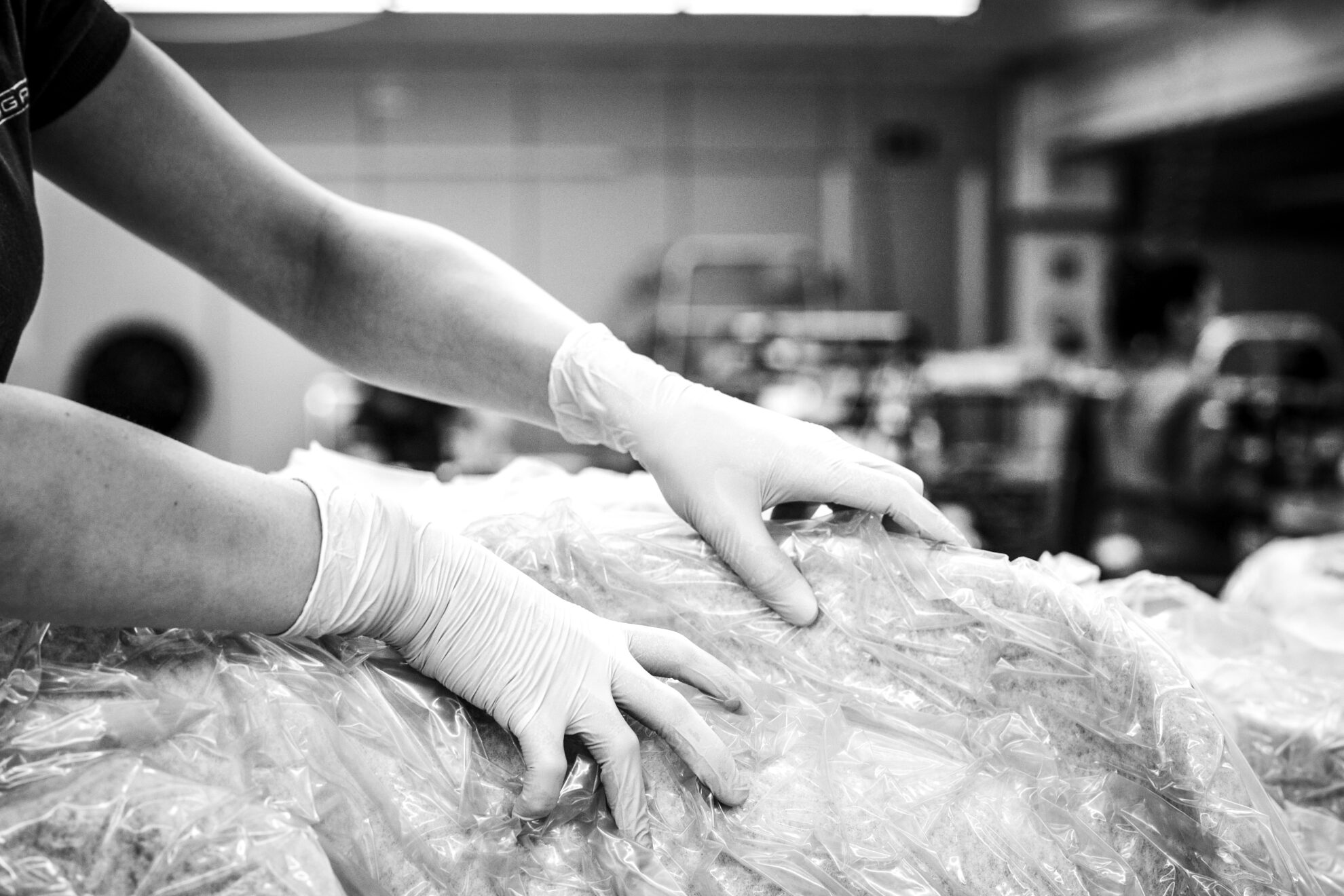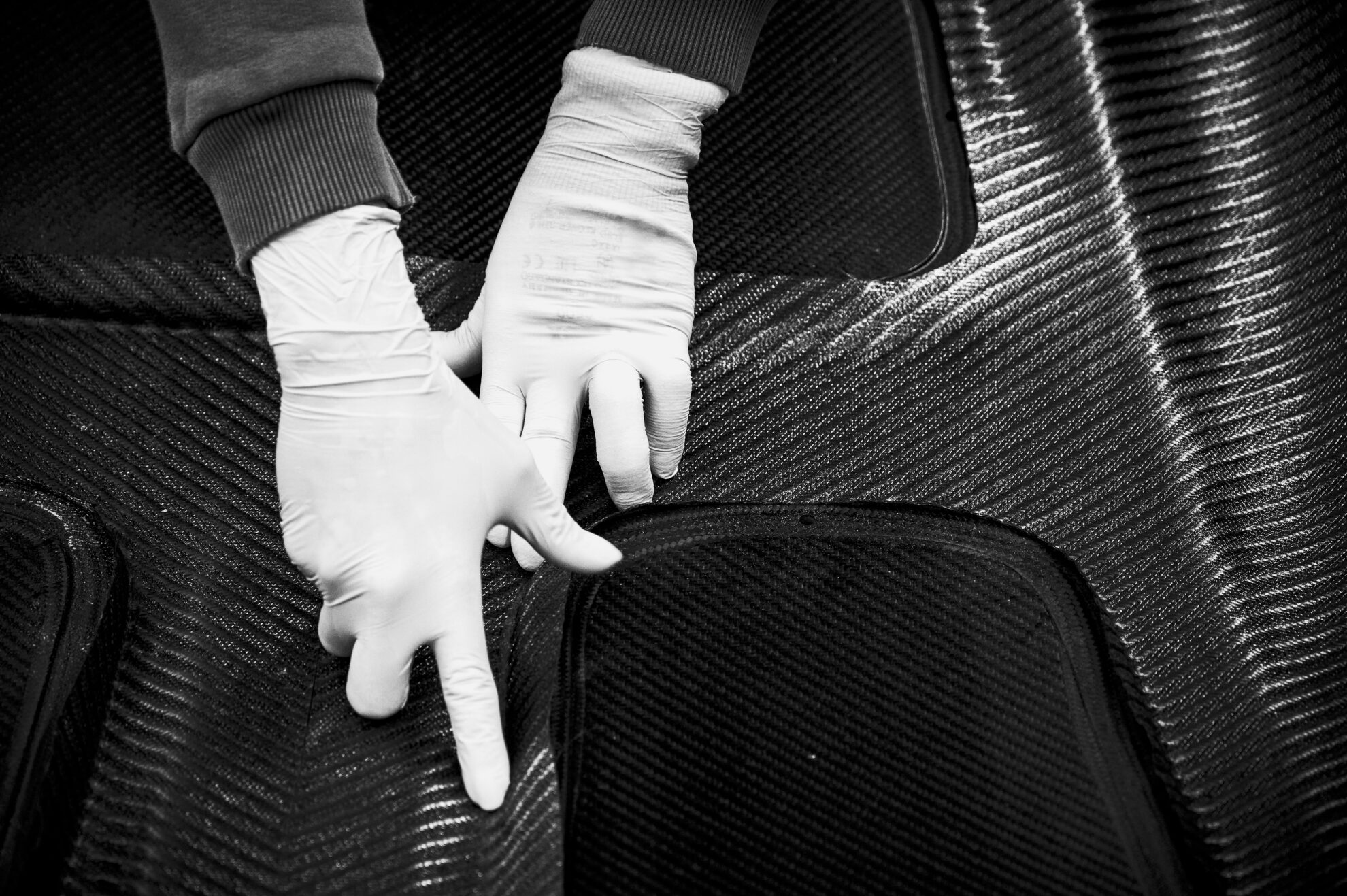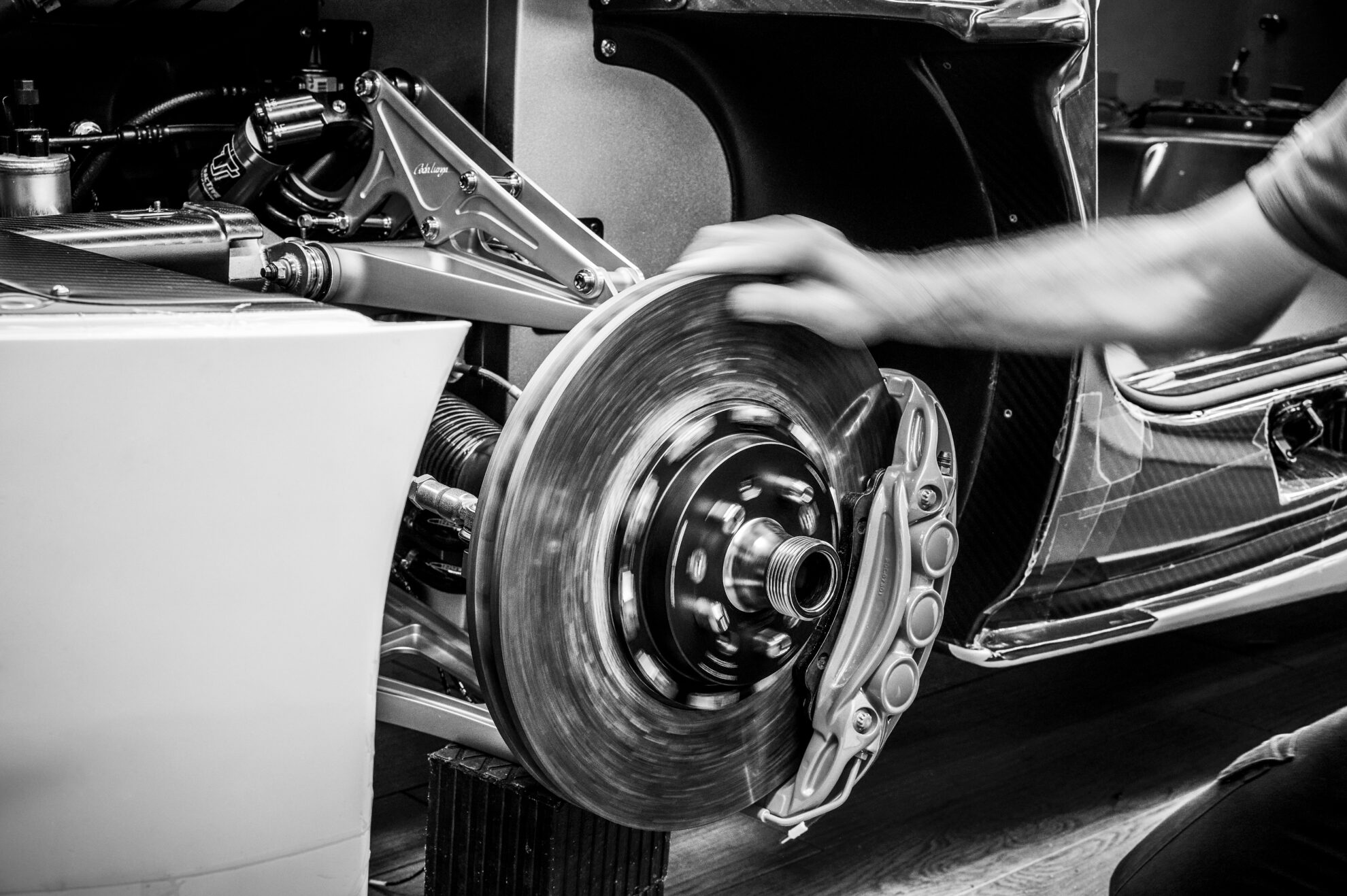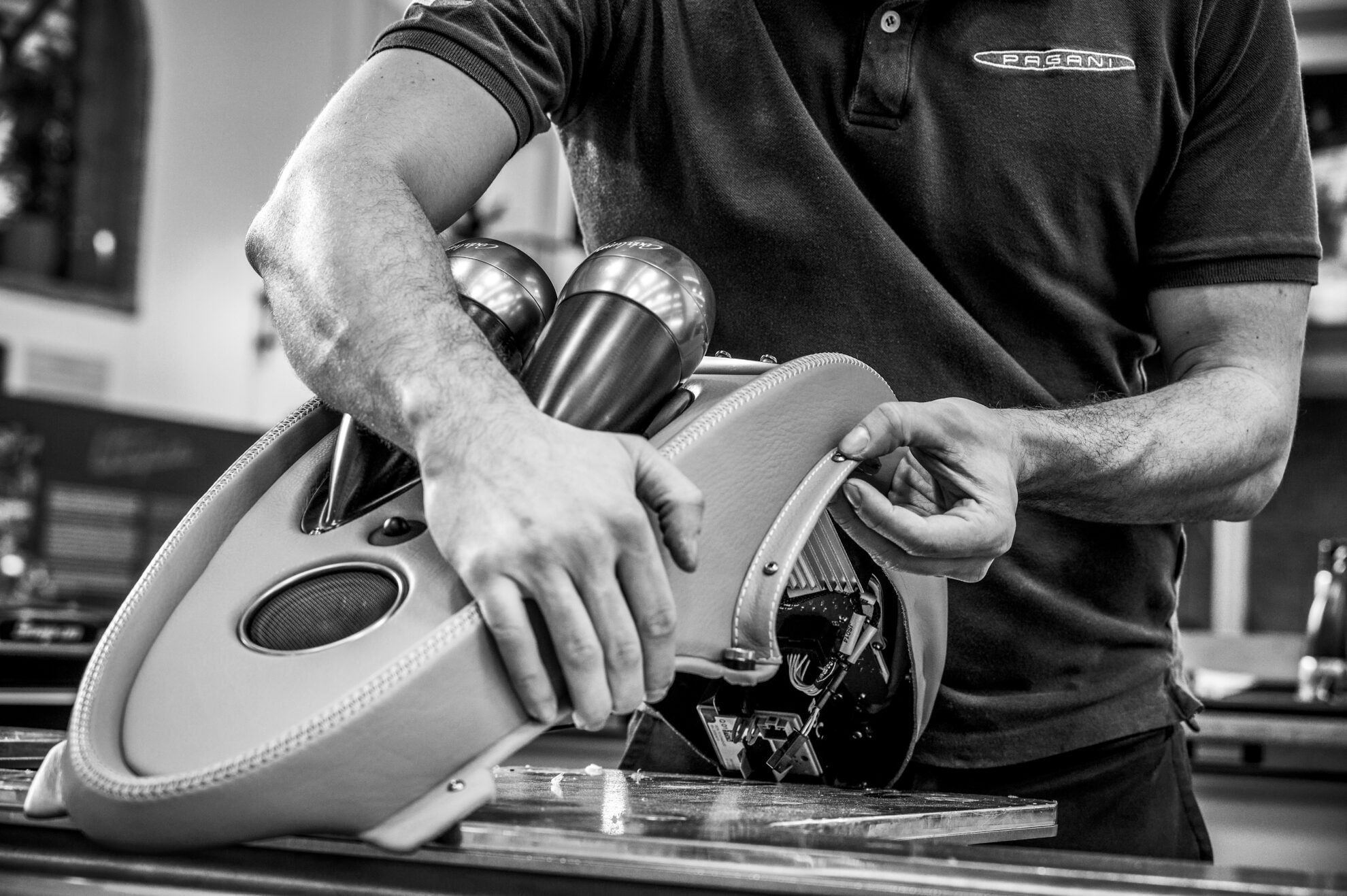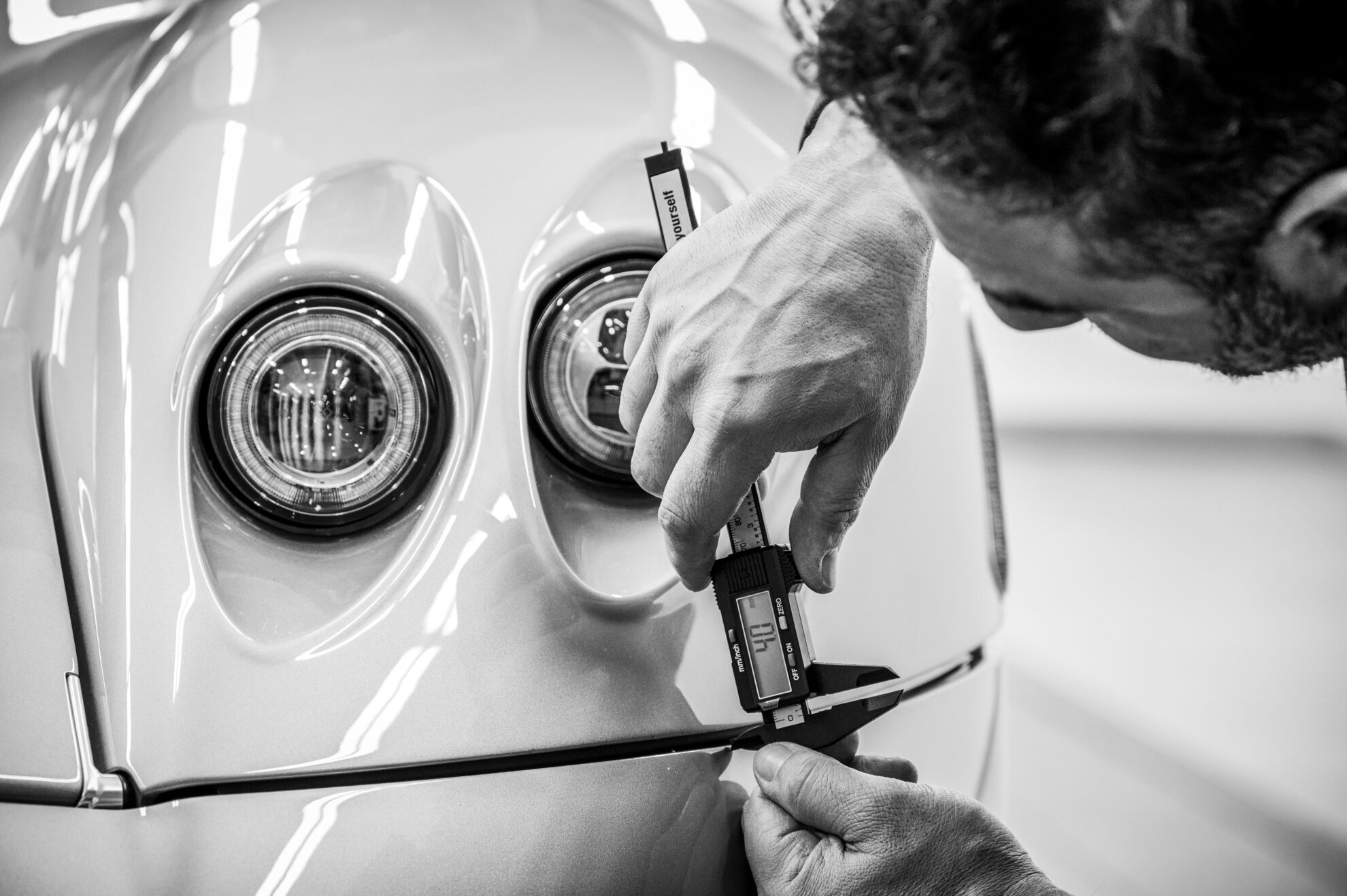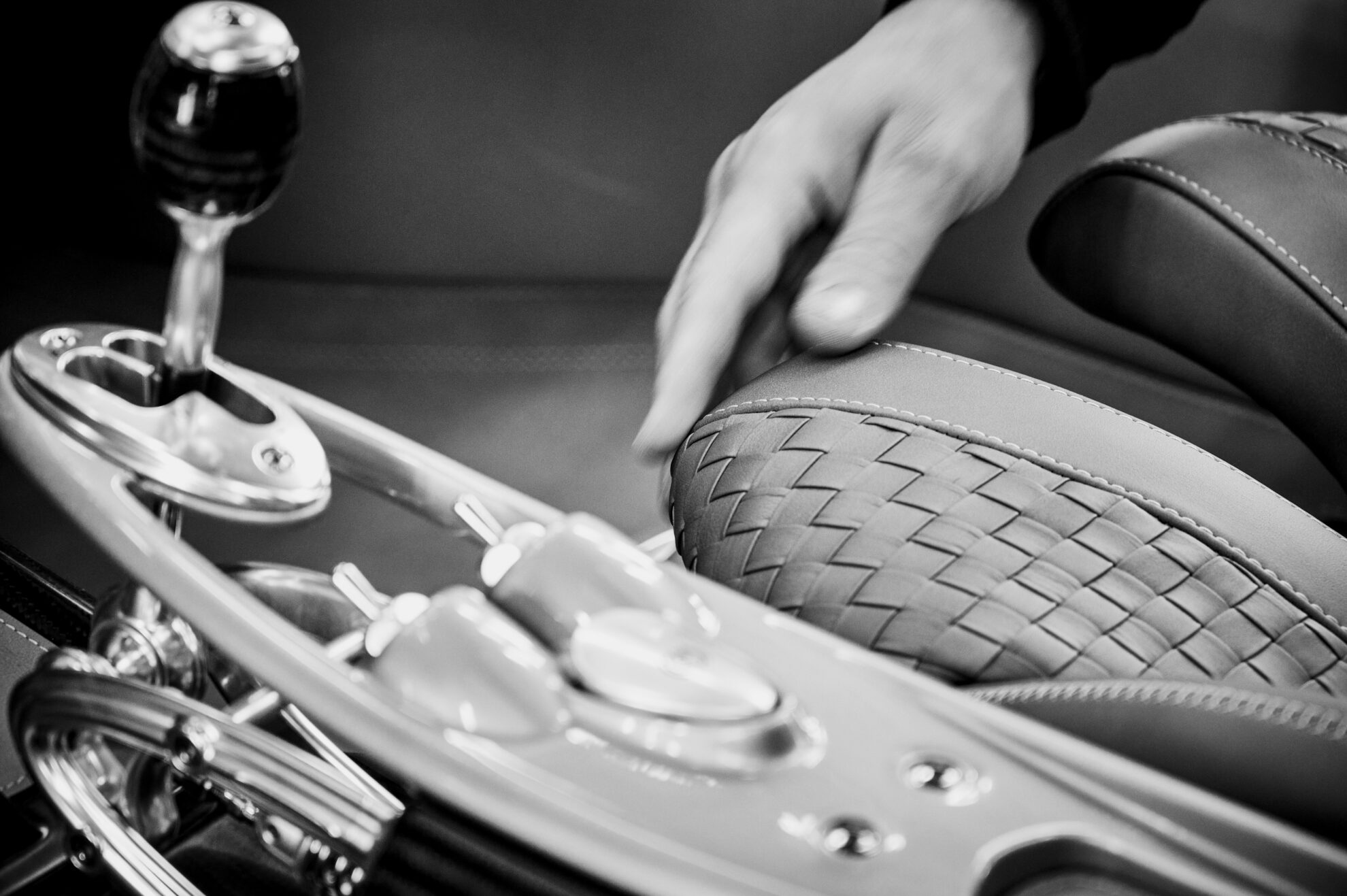PAGANI AUTOMOBILI. 25 YEARS OF HEART, HANDS AND PASSION
The search for beauty continues. Incessantly.
Beauty in the details, beauty in the lines, in the beating heart of cars that are born as creations and not just as designs. Beauty where you cannot see it.
“I had been working for Lamborghini, under the control of the American automobile manufacturer Chrysler, for a few years,” Maurizio Ferrari tells us, “and the Gulf War had changed everything. Almost all the company’s orders were cancelled, and like many others, I was receiving wage support in 1991. Horacio told me about his plan, about the car he had in mind, the life he wanted. I had met him a few years earlier, when he was a level-three factory worker with Lamborghini, and now there he was, right in front of me, talking to me about his visions as if they were already reality. He said that if the company laid me off after my wage support ran out, I could go work with him and help make his dream come true. The supercar manufacturers were all in trouble at that time. I still don’t know what I was thinking, back then, but that’s how it all started”.
Then, on a day like any other in 1992, Horacio Pagani showed Maurizio Ferrari a vacant piece of land.
“This is where we’ll build the new factory and make the car,” he said.
Maurizio stared at him. He didn’t know what to think. He was already working on the project Horacio had in mind, the one that was to become the Zonda. He knew how hard it was to make a dream come true. Then he looked at the empty space in front of them. He really could see the car right there before them, and whether it was because of their friendship, or because he was crazy, he believed Horacio yet again.
“If I could do it all over again, I’d come right back here”. So says Maurizio Ferrari today, happy that he believed in Horacio and that he worked with him for 32 years. This is a story within the story of Pagani Automobili.
Horacio Pagani not only dreamed up and built some of the world’s most beautiful hypercars, he made the company a creative atelier where a community of people works together, sharing their skills and ideas, addressing the great challenges of complicated mechanics, handling beauty and finding reciprocal inspiration.
A community of people whose everyday thoughts, actions and words become part of something bigger, a creative design that is unique and different every time.
“The people who work with us do it with passion and, like beauty, passion is contagious,” says Leonardo Pagani. “Anyone who climbs aboard one of our automobiles can see this in the care taken with the smallest details, the excitement of holding the steering wheel in your hands for the first time; an excitement you will feel every time you drive it. Our customers don’t just buy an automobile, but all the palpable emotions and love that every one of us has put into doing our part. This is why many of our customers find that a single Pagani is not enough for them and come back to buy another”.
Love, emotions, excitement. This is another story within the story of Pagani.
“My brother and I had the good fortune to be involved in the company right from the start,” shares Christopher Pagani. “I was only a child, and I spent my afternoons playing and watching in the workshop, which was located right underneath my room. I saw it as a world full of fantastic things. I didn’t realize it at the time, but I was already learning what was going to be my life-long profession”.
A family that becomes an extended community, a value that is perceived and received, because, as Commercial Director Hannes Zanon says, “Family and community. This is what we are. Everyone can bring their own ideas here and have a chance to express them. Horacio listens to everyone, their inspiration and suggestions, thinks about them, compares them, and the emotions arising out of these meetings of ideas almost always become projects.”
“Horacio has certain intuitions; he’s inspired by a detail that strikes him that often we don’t even notice,” comments designer Alberto Piccolo (Designer – Head of Interiors). “But he falls in love with the idea, studies it, involves us in his creative exploration and establishes an affinity with us that is above all, emotional. The Pagani style is the product of great cultural ferment, but it also creates a sense of belonging, of awareness. I know that this is not just a job for me. I’m creating something, and this is a priceless sensation.”
Pagani Automobili was officially established in 1998, but its story actually began well before this.It began in a little room in Casilda, in the pampas of Argentina, where a 10-year-old boy dreamed of his future, carving balsa wood to make little model cars. It began with the curiosity of that little boy, an avid reader who came to be fascinated with the way Leonardo da Vinci combined Art with Science. This fascination was to stay with him, becoming the inspiration for his life and work.
“We were not much more than children: he was 15 and I was 14. We played tennis at the same club. He was good at it, better than me, and we were friends. We were true friends, even back then. I saw the birth of Horacio’s dream. He talked about it all the time. He showed me his drawings, his model cars, his magazines. He was fascinated by Gran Turismo cars, the ones that ran the 24 Hours of Le Mans. That was all he thought about, and not only did he say he would do it, but that he would do it in Modena, the land of motors. A lot of people laughed at him, but I didn’t. Each day I watched as he took a step closer to making his dream come true. I always believed in him,” said fondly Horacio’s life-long friend Hugo Racca.
A creative atelier where hands and thoughts are inseparable; where Art and Science meld together, striving to achieve a unique beauty that is reflected in people and the way they work.
“I joined Pagani in 2011, a few months after I graduated. I thought I knew it all, but in actual fact I started learning right away. This is where I realized that a designer must not only master lines, but have the materials that will give them their function and make them tactile,” Designer and Project Leader Mattia Gessi reports. “Combining design with materials is like combining Art with Science; essential for addressing beauty. When we started working on Utopia, we allowed this principle to guide us, and now, after spending so many years talking about Utopia and the idea of Utopia as if it were a person, every time I go down to the production area and see a car, I am as amazed as a little child. When I started working in Pagani I never imagined my work could be so amazing”.
At Pagani, beauty meets and resolves the great complications of mechanics, style becomes an aesthetic philosophy, and the inspirations of people who want a Pagani automobile become unique creative processes.
“Ten years have gone by, and I still remember my first conversation with Horacio as if it were yesterday. He talked about himself, his story, what he had done and what he wanted to do. One thing was particularly easy to understand: his passion for creating, for inventing,“ says Lorenzo Kerkoc, Special Projects Manager. “A contagious passion I couldn’t do without today, myself. Every special project I oversee responds to the desires of a single customer, which I have to interpret and make concrete. The great complication lies in finding the perfect balance between their wishes, practicality and beauty.”
For Pagani, beauty is the performance of an automobile, safety and the enjoyment of driving, and it’s all the result of ongoing research and a natural propensity for innovation.
“I work on the mechanical part, designing frames and suspensions. Many people might think of this as an anonymous sort of job, but in 25 years working in mechanical design with Pagani, I’ve experimented with materials and procedures, and with human relationships, both with the the team as well as Horacio himself,” reports Senior Mechanical Designer Germano Franzese. “I’ve learned to listen to people and to pay attention to little details that nobody may ever actually see. Hidden details testifying to our philosophy of beauty.”
Along with beauty, innovation is another great source of inspiration, experienced every day in Pagani. The future comes here first, thanks to research into composite materials, technologies allowing the company to work with alloys and aluminum making hypercar components machined from a solid block and advanced electronics that are the sensible mind allowing people to drive with their hearts.
Francesco Perini, Head of Pagani’s Technical Department, is surrounded by innovation, but what really interests him is philosophy. “I saw a path, a way of approaching things in which I could find myself comfortable with. When someone new comes to work with us, above all, I tell them about all our values , and how they reverberate throughout the automobiles and the intellectual process we conduct every day. Here, the designer embraces a philosophy, not just a method. Designers and engineers don’t just work behind a screen: they need to understand the results of their work with their hands, handling it, realizing what its effect will be on the person who assembles it and the one who uses it. Now, more than ever, Art and Science need to restore the value of hand craftsmanship, lost for too long.”
Mary Malandrino has been working with the company since 2003 and has been Human Resources Manager for ten years, so she knows how much of a difference people can make. “Know-how is essential, but when I have a job candidate in front of me, I also try to glimpse what kind of a person they might be. Sensibility, passion, the ability to feel empathy with your surroundings are equally essential qualities for living with us. We choose people who, with their whole complex universe of skills, needs and sensibilities, are the key to what we do. However, we also need to be chosen, and this is fundamental. Only in this way can we feel like an important part of a reality in which everyone is important for what they do, and how they do it.
I was very young when I joined Pagani, but I already had work experience, and wasn’t looking for just any job. I was looking for a place where I would feel fulfilled, and realize my potential. As soon as I joined the company, I felt that I was in a different world. I felt welcome, as if I was part of a family. I haven’t changed my mind over the past 20 years working with Pagani”.
For Pagani, customers are first and foremost people.
With constantly growing demand in Europe, North America and Asia, buying a Pagani means above all courting a desire, because like attention to detail, customer care also is approached in an artisanal way in Pagani.
Alberto Giovanelli (Asia-Pacific Managing Director) came to the company in 2006, at the age of 26. He began as an intern, but only two months later he found himself travelling the world with Horacio. For 11 years, he spent more time with Horacio than with his own family. “Our point of differentiation in a highly competitive market is our ability to make custom-designed automobiles. All the time, even when – as in the case of a customer in Singapore – they ask us to change the livery of a Zonda and make it the same pink as Elvis Presley’s car. Or as in the case of Lewis Hamilton, who wanted a Zonda in the same shade of purple as the first go-kart he had as a kid. The secret to competing in this market is always being able to have an innovative vision. The kind of relationship we have with our customers is innovation, just like it’s innovation to design a Zonda with a right-hand drive, a major competitive edge. This ability to anticipate our customers’ needs and also to listen to them allows us to develop a great relationship with our customers which often becomes a true friendship, extending to the whole family.”
This is Pagani style, the same all over the world.
From Miami, where his office moved in 2019, Michael Staskin (CEO of Pagani America) serves the company’s most important market: “Our customers are highly knowledgeable people, familiar with the history of Pagani and Horacio’s story. They know that, in addition to being high performance automobiles, our cars, with all of the attention to detail, are works of art. This is a value they truly recognize and appreciate . What we, as the US team, are able to add to the equation is the added value of our attention. We all become a family in some way, and not just during the time between order placement and delivery, but afterwards as well. We are fortunate to spend time with our customers multiple times a year, including at our rallies, where they love when we choose roads with lots of curves so they can amplify the emotions of their driving experience. They often travel across the world – with their cars – to participate because it is a time when they can stay with like minded people who are part of the extended Pagani family.”
Pagani sees time as a vital element of desire.
Waiting for a car is an essential part of Pagani itself; during the wait, the customer not only imagines the day when the car will arrive, but imagines the vehicle itself, customizing it together with the designers and technicians who work with them day by day. It’s a courtship of emotions and suggestions, such as seeing a detail where others don’t see it, or a color that others cannot perceive, creating a truly unique, unrepeatable vehicle.
Not just customer attention but, also in this case, a philosophy based on inspirations and desires.
It couldn’t be otherwise, and the reason is, itself, a detail.
All Horacio Pagani’s projects are identified by a code.
Simple. Essential. Recurrent.
The consonant is always the same, followed by a changing number.
Or maybe it would be more accurate to describe it as a number evolving around a reference point that never changes.
C8, for example, is the code for the design of the Zonda, whereas C9 is the code for the Huayra and C10 is that of the Utopia.
C, as in Cristina Elizabeth Perez. Cristina was only 19 when she married Horacio. She shared everything with him. The move to Italy, the search for a job, holding up her dreams to the light, all the work that had to be done in the company, dreams coming true, the company that has grown and that today is preparing for the future, their children following in their father’s footsteps.
The third letter in the alphabet is Horacio’s inspiration, the capital letter of his life.
“The codes are not just cars,” says Cristina, “but dreams that gradually take shape, and just as no two dreams are the same, no two Paganis are the same. Every one is different, with a little detail that makes it unique. We work with beauty, and to do this we need to do our best every day, to improve and exceed ourselves. Only in this way can we aspire to produce not only apparent beauty, but unseen beauty, the kind that moves the great complications from inside, making our automobiles so desirable and exclusive.”
Improving, always, every day.
Pagani has no room for words like success or perfection, because success and perfection mean ongoing, dynamic research, movement of the mind and of the hands that reflect it.
Carlo Alberto Roma (R&D Composite Trimming Supervisor) is in charge of composite production. He has always done this. He was employee no. 8, joining Pagani in 1998, and he has built all his certainties on this rock. His, and the company’s. “We’re always on the lookout for little details. We’re never entirely happy with the results. None of our automobiles is just like another. We’re craftspeople,” he proudly claims; “we try and try again, and we’re not afraid to spend time on it.”
Ongoing improvement is more than just a philosophy for Pagani: the company invested 14 million euros, representing 11% of its turnover, on 69,400 hours of research and development in 2022.
“I hadn’t yet turned 18 when I joined Pagani,” says Roberto Malmusi (R&D Composite Layup Supervisor). “I started working with carbon fiber skins, and I still do this. We have always invested heavily in composite materials.
We don’t judge cars on the basis of a simple performance factor such as speed. Of course Pagani cars are fast. But the challenge we face is to make them perfectly safe and comfortable to drive as well. Anybody should be able to drive a Pagani, normal people, not just professional drivers. Research into the quality of composite materials is essential for this purpose; a lightweight, strong, maneuverable car is a safe, comfortable car. We see ongoing improvement not just as a company procedure, but as a mindset that none of us ever leaves behind.”
Striving for beauty demands constant motion.
Pagani Arte is a new creative atelier expanding on the idea of beauty cultivated by Horacio. Not just hypercars, but interior design for airplanes, helicopters, yachts and residences, all in pursuit of beauty in form, style, materials and emotional equilibrium.
With Pagani Arte, the search for beauty becomes an exclusive, reserved identity, the emotional quintessence of luxury, something never seen before but long awaited.
Origins and the future, tradition and innovation, Art and Science.
Binary, indivisible, twin relationships.
“Questioning our certainties, cultivating doubt about what we consider already acquired. Especially about what we think we can do well. This is how we work; it’s always been this way, and it won’t change,” says Horacio Pagani. “Putting yourself on the line means listening, considering, questioning your choices and being humble so as to change your perspective. This is how you become an example, and this is how people grow, mature, acquire and pass on their knowledge. Only if every one of us is curious and passionate about beauty can we continue striving to achieve it; if you live a quality life, it is only natural to produce quality. Passion and discipline are the company’s key values, making it a natural leader. We want to be leaders not because of what we have done so far, but because of what we still want to do, because of the horizons we push a little further forward every day. This horizon will allow us to continue making automobiles that are beautiful, innovative, safe, comfortable and on a human scale. When you climb aboard a Pagani, you are not just a customer, but a person, and you must feel at home in our car. A person who, in what they see and feel in that car, the steering wheel, knobs and upholstery, must recognize themselves and their lives, who they are and who they want to be. It was a challenge 25 years ago, and continues to be a challenge today, for tomorrow. But would we be human, if we didn’t have any challenges to work on? With our 25 years behind us, we bring Utopia to the road. Our own Utopia, and we couldn’t think of a better way of ushering in the next 25 years.”
__________________________________
Save the date! We will be celebrating our anniversary in the center of Modena, June 16 through 18; 25 hypercars for 25 years, all the models that have made the history of Pagani Automobili. Music with Mario Biondi in concert for a truly memorable party! And more surprises… we look forward to seeing you there!
PAGANI PRESS OFFICE
Pagani Automobili
